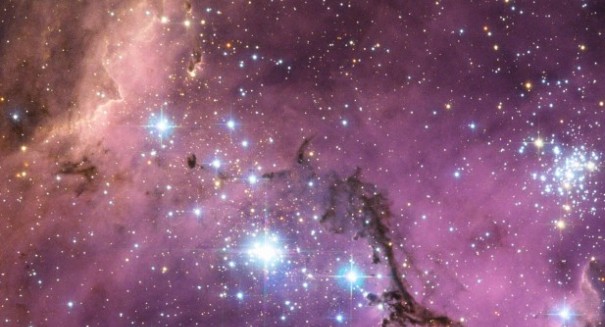
© ESA/NASA/Hubble
Astronomers have measured the distance to our nearest neighbor galaxy, according to a news release from the Carnegie Institution for Science. In the process of refining the measurement of the distance to the nearest galaxy, astronomers were able to enhance the astronomical calculation that helps measure the expansion rate of the universe.
According to NASA, the expansion or contraction of the universe is contingent on its content and past history. The current rate of expansion is typically expressed as the Hubble constant. The Carnegie Institution adds that the Hubble constant is named after 20th Century Carnegie astronomer Edwin P. Hubble, who discovered that the universe has been expanding since its beginning.
In order to determine the age and size of our universe, scientists must identify the rate of this continuing growth. According to astronomers, one of the biggest uncertainties when it came to past measurement of the Hubble constant has been the distance to the Large Magellanic Cloud, which just so happens to be our nearest neighbor galaxy.
To determine the scale of the universe, astronomers must first measure the distance to close-by objects and then using observations of these objects in more distant galaxies to calculate distance ever further out in the universe. Without an accurate measurement of the distance to the LMC, however, scientists have had trouble pinpointing the distances to more distant objects.
According to Carnegie's Ian Thompson, hundreds of distance measurements have been made over the years using the measurement astronomers have for the distance our nearest neighbor galaxy. LMC is perfect for this role because it is close and holds a lot of different stellar distance indicators. However, Thompson notes that all the calculations have systemic errors and the each methods has its own uncertainties.
Astronomers calculated the distance to the LMC by examining rare close pairs of stars, known as eclipsing binaries. Gravitationally bound to each other, the total brightness from the system dims once per orbit as each component eclipses its companion. Astronomers were able to determine the size and mass of these stars by studying these changes in brightness and by measuring their orbital speed. This information is useful in determining the distance to the LMC.
In the past, astronomers have used the same method, but with hot stars. Given this fact, the distances were not as accurate as astronomers wanted them to be. In this study, astronomers used 16-years-worth of data to identify a sample of intermediate mass binary stars with very long orbital periods, excellent for calculating accurate distances.
According to the Carnegie Institution, the team refined the uncertainty in the distance to our nearest neighbor galaxy down to 2.2 percent. This new measurement can be used to lower the uncertainty in the calculations of the Hubble constant to 3 percent. Eventually, astronomers believe they can improve the uncertainty in the calculations of the Hubble constant to 2 percent.
According to
redOrbit, astronomers determined that the LMC lies 163,000 light-years away.
The study's findings are described in detail in the journal
Nature.

Reader Comments
to our Newsletter